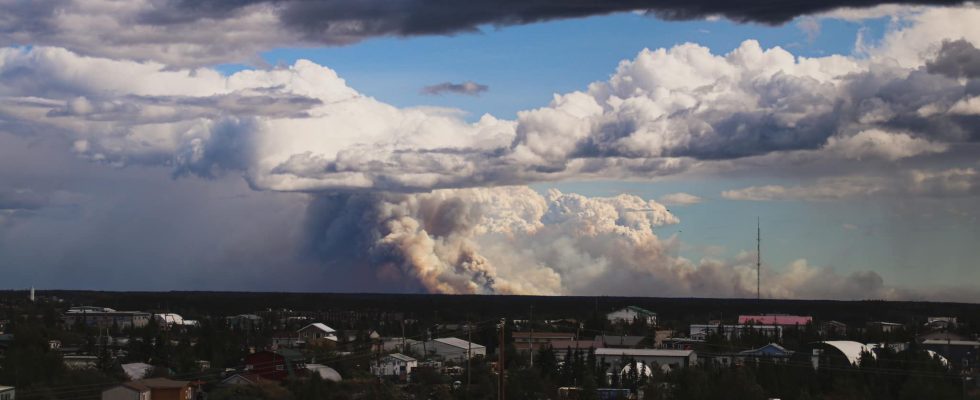There is the visual and immediately perceptible damage: charred trees, destroyed natural habitats, evacuated cities. And then the many other, less visible consequences of the fires that have been ravaging Canada since this summer. Experts are already alarmed about the negative effects of ash clouds on health or the record of CO2 emissions due to forest fires – very largely beaten. But another side effect, less known, could prove disastrous in the long term: the thawing of the permafrost.
Canada is having its worst year for wildfires. More than 15 million hectares have burned as of August 25, according to the Canadian Interagency Forest Fire Center (CIFFC) – an area almost equivalent to that of Tunisia. The magnitude of the disaster is such that the 20,000 inhabitants of Yellowknife, the main city in the Canadian Far North and located 500 kilometers from the Arctic Circle, had to be evacuated.
The flames do not only threaten the population. They are also weakening permafrost, a complex ecosystem that spans half of this region – and nearly 5 million square kilometers across the country. This is made up of a superficial stratum which thaws every summer and refreezes in winter, then a deeper layer, mineral and containing immense quantities of greenhouse gases (CO2 and methane), which has been constantly frozen for thousands or even millions of years. However, the thawing of this ground, already started by global warming, is accelerating under the effect of forest fires, themselves favored by the disruption at work. A hellish cycle.
“Permafrost forms the backbone of northern ecosystems and contains more than twice the amount of carbon found in the atmosphere. Some sites have experienced robust permafrost over the past two years, but the 2023 fire season in Canada will trigger a widespread thaw”, warns on X (ex-Twitter) researcher Merritt Turetsky, director of the Arctic and Alpine Research Institute, and professor at the University of Boulder (Colorado).
“Thermokarsts” and greenhouse gases
“In these high latitude regions, the ground is often composed of mosses that protect the permafrost by letting in the winter cold but blocking the summer heat. If there are fires, this protective layer and insulation disappears. The permafrost therefore becomes more exposed to summer heat and thaws more easily”, explains climatologist Gerhard Krinner, member of the IPCC and CNRS research director at the Institute of Environmental Geosciences (Grenoble).
These northern ecosystems, made up of forests and tundra, have never been spared by fires. But the fires are affecting areas still further north and are gaining in intensity. Their severity and frequency “have changed over the past decades”, confirms in The Conversation Patrick Louchouarn, professor at the Ohio University School of Earth Sciences. “About 70% of the area of arctic peat affected by fires in the last 40 years relates to the last eight years, and 30% of this area is concentrated in the year 2020 alone,” he adds. Calculations that do not yet include 2023…
This thawing of the permafrost has several consequences. The first affects the morphology of environments with the formation of “thermokarsts”, a barbaric word to designate land subsidence caused by a sudden collapse of permafrost, in which water accumulates. Wildfires contributed disproportionately to their increase, according to a study published in 2021 by researchers at the University of Illinois, who analyzed 65 years of data in Far North Alaska.
The second, much more worrying, concerns the release of greenhouse gases, the cold having hitherto slowed down or stopped the degradation of the organic matter sequestered in the permafrost. “There is no ‘explosion of the planet’ effect to fear, but these emissions of methane and CO2 into the atmosphere could increase the intensity of climate change by 10 to 15%”, indicates Gerhard Krinner, specifying however that the estimate “remains uncertain”. According to the IPCC, the global area of permafrost could lose up to 40% by 2100. In the most optimistic scenario.
